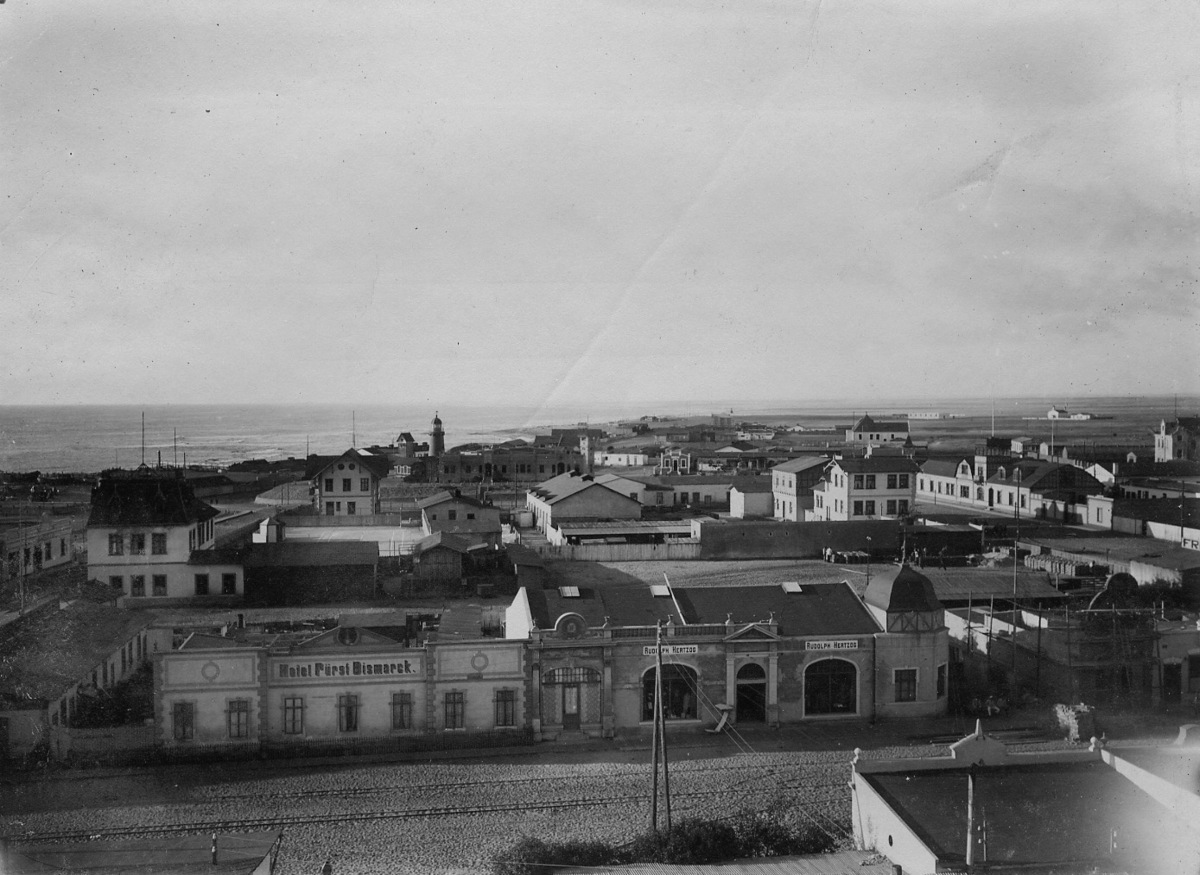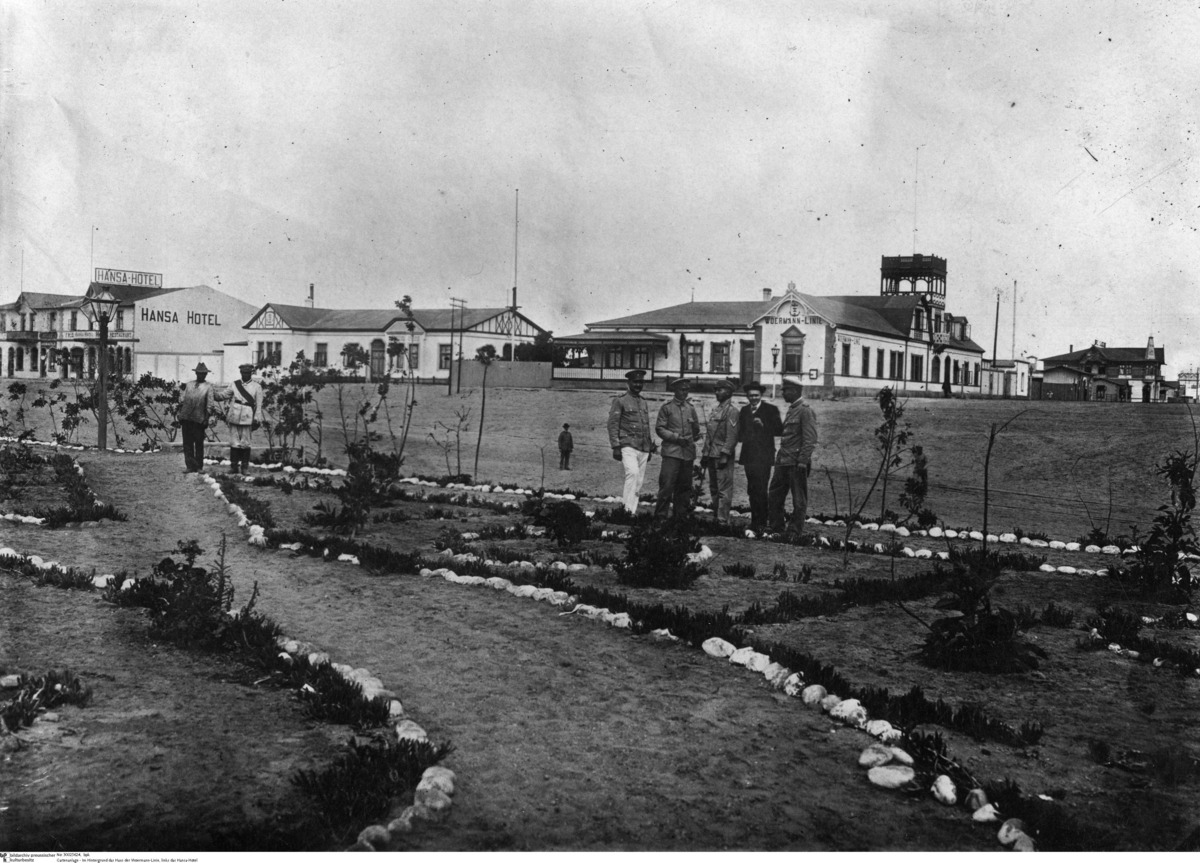Abstract
Founded in 1892, Swakopmund was the main harbor and second largest
town (after Windhoek) in German Southwest Africa, the former German
colony known today as Namibia. The city's location was less than ideal
in that the coastline offered no natural protection and the navigable
waters proved shallow. (Unfortunately for the Germans, the natural
deep-water harbor of Walvis Bay, which lay just south of Swakopmund, had
been occupied by the British in 1840 already, in order to secure safe
passage for British ships sailing around the Cape of Good Hope.) German
settlers and soldiers had to compensate for these natural shortcomings
by constructing jetties, first out of wood, then out of iron. In 1902, a
railway connecting Swakopmund to Windhoek was completed.
The German colonial era was short-lived. German Southwest Africa was
occupied by South Africa at the beginning of the First World War. The
colonies were also economically insignificant, producing only 0.1% of
German imports and receiving only 0.1% of all German exports. Today,
Swakopmund is known as an attractive Namibian vacation destination and
original examples of German colonial-era architecture are among its
popular tourist attractions.

